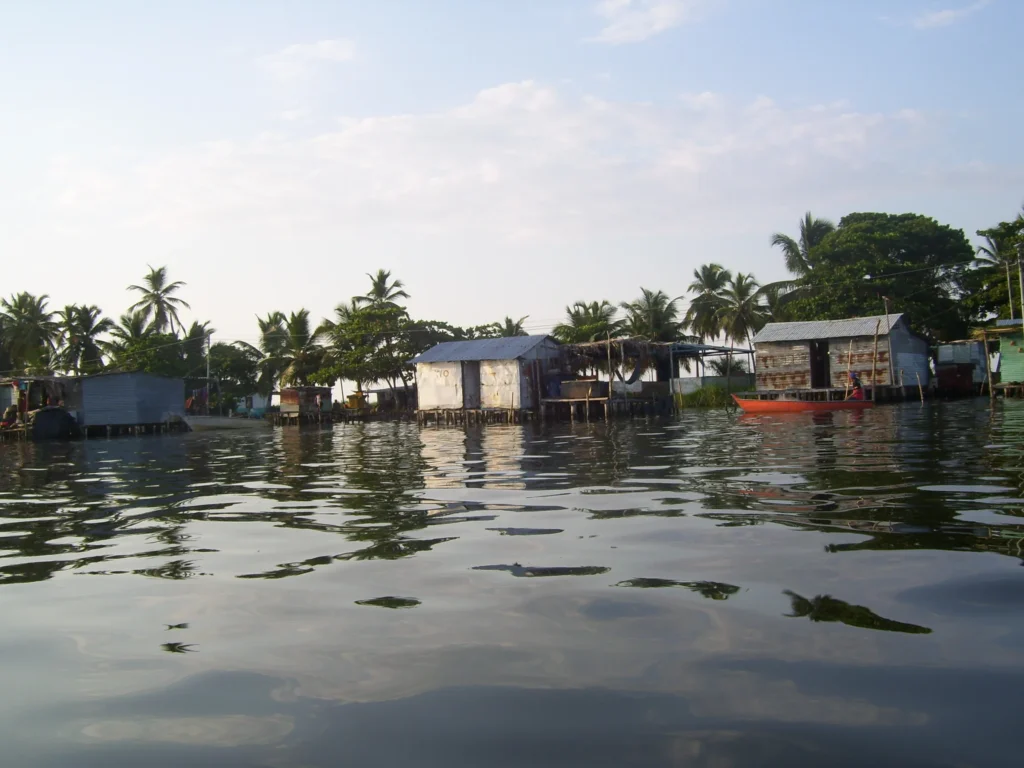Introduction
The Catatumbo lightning is one of the most striking natural spectacles on Earth, taking place where the Catatumbo River meets Lake Maracaibo in Venezuela. Known for its almost nightly displays, this unique weather phenomenon produces thousands of lightning bolts each year, lighting up the skies with unmatched intensity. Often referred to as Maracaibo lightning, it plays a major role in the Venezuela lightning storm region, attracting scientists and curious travelers alike. In this article, we uncover eight incredible facts about Catatumbo lightning, exploring its science, history, and why it continues to fascinate the world.
Read also: You Won’t Believe What’s Happening to Lakes Around the World! The Shocking Truth Revealed!
What is Catatumbo Lightning?
The Catatumbo lightning is a continuous and intense lightning storm that occurs where the Catatumbo River empties into Lake Maracaibo, in the Zulia region of northwestern Venezuela. This rare weather phenomenon is renowned for producing lightning without accompanying thunder, visible on clear nights from miles away.
What sets Catatumbo lightning apart is its frequency and predictability. Lightning strikes occur for around 140 to 160 nights a year, lasting up to 10 hours per night, with as many as 280 flashes per hour. That’s over 1.2 million lightning bolts annually, making this area the most electric place on Earth. This extraordinary activity has earned it the nickname “Maracaibo lightning” and a spot in the Guinness World Records for the highest density of lightning per square kilometer.
Read also: 10 World’s Deepest Lakes: The Most Stunning Abyss of Nature
Where and When Does It Happen?
Catatumbo lightning occurs almost exclusively in one location on Earth — at the mouth of the Catatumbo River, where it flows into the southwestern edge of Lake Maracaibo in Venezuela. This area is a hotspot for extreme weather activity and is often referred to as the epicenter of the Venezuela lightning storm zone.
This unique weather phenomenon is incredibly consistent, occurring between 140 and 160 nights each year, especially during the rainy season. The most intense lightning activity typically takes place between April and November, with peak frequency during September and October. On these nights, lightning storms can last up to 10 hours, producing up to 280 flashes per hour — a spectacle known as the Maracaibo lightning show.
The best time to witness Catatumbo lightning is after sunset when atmospheric conditions are most favorable. While it can be seen from miles away, the most vivid displays are observed from the southern shore of Lake Maracaibo, near small fishing villages like Congo Mirador.
Read also: 10 Deepest Lakes in America: A Journey into Depth and Beauty
The Science Behind the Storm
The phenomenon is not just random. The geographical setting plays a huge role. The Catatumbo River basin, surrounded by the Andes Mountains, Sierra de Perijá, and Mérida Cordillera, creates a closed valley that traps warm, moist air from the Caribbean Sea. When this warm air collides with cool air descending from the mountains at night, it generates powerful convection currents that result in the formation of towering cumulonimbus clouds — the perfect breeding ground for continuous lightning.

Interestingly, this Venezuela lightning storm is mostly intra-cloud, meaning the bolts occur within the clouds, not striking the ground. This makes it visually spectacular yet relatively safe for observers.
Some early theories linked Catatumbo lightning to methane emissions from local swamps and oil fields, but modern research points to atmospheric instability, heat, and moisture as the primary drivers of the unique weather phenomenon.
Key Takeaway:
Catatumbo lightning is a rare, high-frequency lightning storm over Lake Maracaibo, driven by local geography, moisture, and air currents — making it one of the world’s most fascinating weather phenomena.
Read also: Evolution of the Atmosphere: Toxic World Became Our Life-Giving Air in 4.5 Billion Years
Cultural and Historical Significance of Catatumbo Lightning
The Catatumbo lightning is more than a meteorological marvel—it’s deeply embedded in the cultural identity and historical narrative of Venezuela, particularly in the Lake Maracaibo region. For centuries, it has illuminated the skies with such consistency that sailors dubbed it the “Lighthouse of Maracaibo.” Long before modern navigation tools, the near-nightly glow of this Venezuela lightning storm helped guide ships safely through the Caribbean waters and into port, acting as a natural maritime beacon.
Its symbolic importance extends beyond function. The lightning is proudly featured on the flag and coat of arms of Zulia, the Venezuelan state where the Catatumbo River meets Lake Maracaibo. It represents resilience, power, and the region’s natural uniqueness. Locals see the Maracaibo lightning not just as a storm, but as a guardian light and a cultural emblem passed down through generations.
Indigenous myths have long attributed the unique weather phenomenon to spiritual forces or ancestral guardians. Even today, many believe the lightning carries protective energy over the region.
Read also: 7 Mind-Blowing Facts About Solar Atmospheres You Didn’t Know
Is Catatumbo Lightning Dangerous?
Though the Catatumbo lightning is one of the most powerful and visually intense weather phenomena on Earth, it surprisingly poses minimal danger to people living in the Lake Maracaibo region or visiting the area.
One of the key reasons for its low threat level is that most of the lightning is intra-cloud, meaning the electrical discharges occur within the clouds, not from the cloud to the ground. This significantly reduces the likelihood of ground strikes, which are typically more hazardous to humans and infrastructure.

That said, safety is still a priority. During periods of high Maracaibo lightning activity, especially in stormy weather, it’s wise to follow general lightning safety precautions:
- Avoid standing in open areas
- Stay clear of large water bodies like Lake Maracaibo
- Avoid using metal objects or electronics in exposed locations
Local communities have adapted to the rhythm of this Venezuela lightning storm, and guided tour operators are well-versed in keeping visitors safe while observing the spectacle from strategic points near the Catatumbo River.
Read also: Tornadoes: Understanding Nature’s Destructive Fury
Key Points:
- Mostly cloud-to-cloud lightning — less threat to the ground
- Rarely causes damage or injuries
- Local residents live safely around the phenomenon
- Follow basic storm safety tips while observing
How to Witness Catatumbo Lightning: A Traveler’s Guide
If you’re planning to experience the dazzling display of Catatumbo lightning, you’re in for one of nature’s most extraordinary light shows. This unique weather phenomenon is best observed in the southern region of Lake Maracaibo, where the Catatumbo River flows into the basin.
🗓 Best Time to Visit
The optimal viewing season is between April and November, with the highest lightning frequency typically occurring in September and October. During these months, the Venezuela lightning storm is active on up to 20 nights per month, with storms starting after dusk and lasting deep into the night.
📍 Top Viewing Spots

- Congo Mirador – A small fishing village floating on Lake Maracaibo; ideal for up-close observation
- Ologa – A tranquil village offering front-row views of Maracaibo lightning
- Elevated points around the lake with clear views of the Catatumbo River delta
Read also: 6 Best Places to See the Northern Lights
🧭 How to Get There
- Fly into Maracaibo International Airport (MAR)
- Book local eco-tours or riverboat excursions operated by experienced guides familiar with the weather patterns and safety protocols
✅ What You’ll Need
- A camera with low-light capability or long-exposure mode
- Bug repellent, waterproof gear, and flashlights
- Patience — the storms are regular, but the weather can be unpredictable
Pro Tip:
Choose nights with low moonlight for darker skies and clearer visibility of the lightning. Guided tours often include overnight stays in eco-lodges, offering immersive experiences right on Lake Maracaibo.
Key Takeaway:
To safely witness the breathtaking Catatumbo lightning, plan your trip during the wet season, book a guided tour, and head to key observation points along the Catatumbo River and Lake Maracaibo.
Read also: 15 Incredible Places to See on Your California Road Trip for an Unbeatable Experience
Conclusion
Catatumbo lightning remains one of Earth’s most mesmerizing natural spectacles. Its consistent occurrence over Lake Maracaibo not only enriches local culture but also provides scientists with a natural laboratory to study atmospheric electricity. Whether you’re a curious traveler or a weather enthusiast, witnessing the Catatumbo lightning is an unforgettable experience that showcases the dynamic beauty of our planet.
Key Takeaway: Catatumbo lightning is a unique atmospheric phenomenon occurring over Lake Maracaibo in Venezuela, known for its high-frequency lightning storms and cultural significance.
FAQs
1. What causes Catatumbo lightning?
The interaction of warm, moist air from the Caribbean with cooler air from the Andes mountains forms thunderstorm clouds, which result in frequent lightning.
2. Is Catatumbo lightning visible every night?
It occurs approximately 140 to 160 nights annually, primarily during the wet season from April to November.
3. Can you see Catatumbo lightning from space?
Yes, the intensity and frequency of the lightning make it visible from space, and it has been observed by satellites.
4. Where is the best place to see Catatumbo lightning?
The southern region of Lake Maracaibo, near the mouth of the Catatumbo River, offers the best viewing opportunities.
5. Does Catatumbo lightning produce thunder?
Yes, but due to the distance of the storms from observers, the thunder is often not heard.





